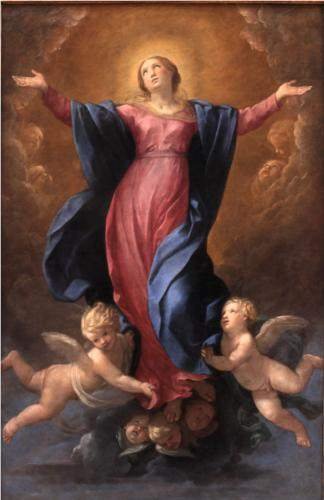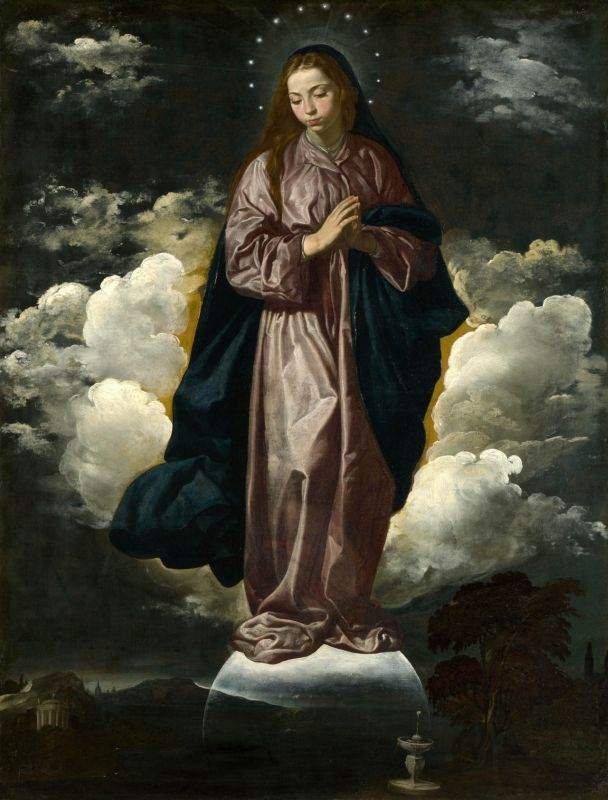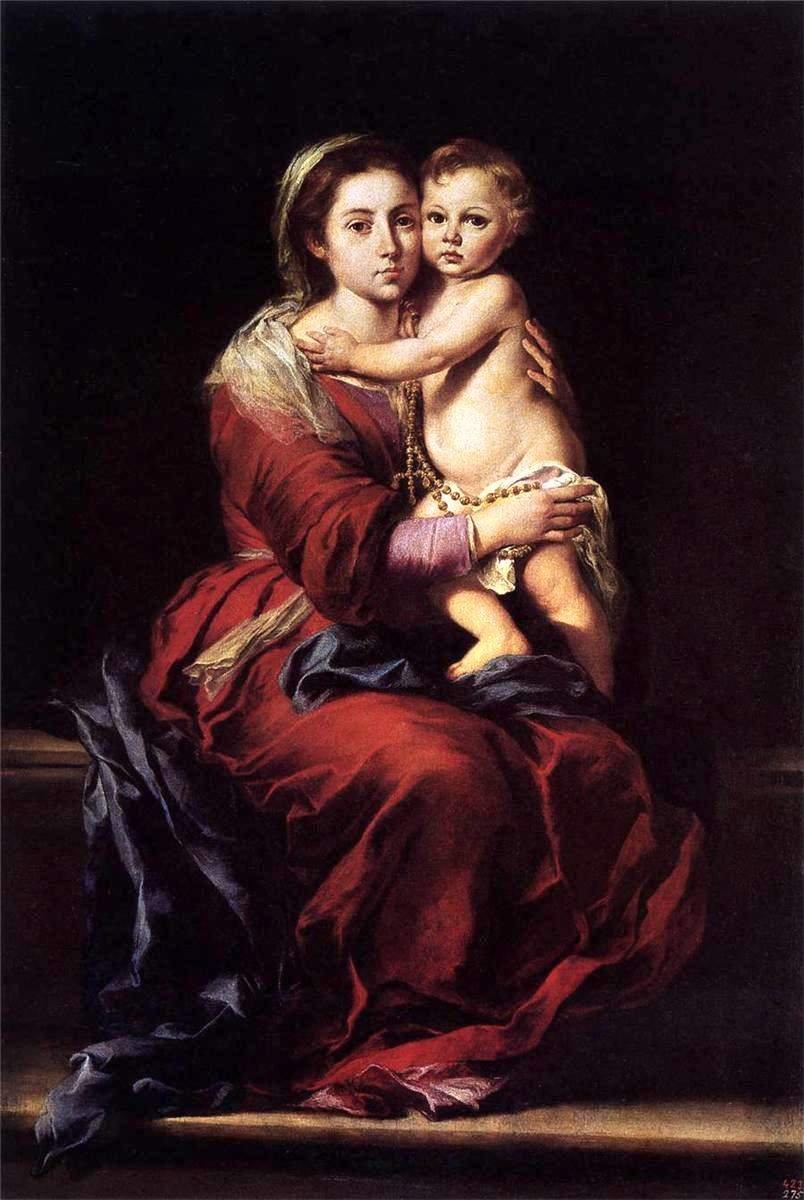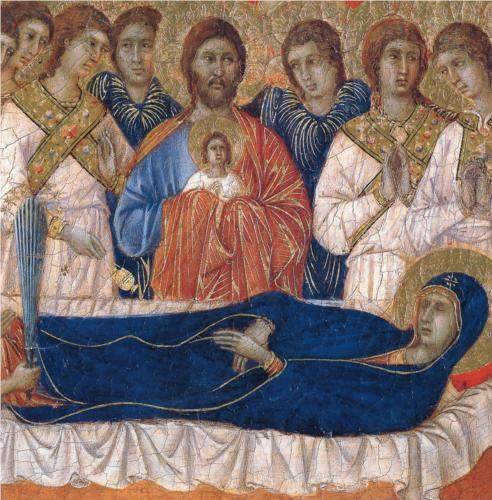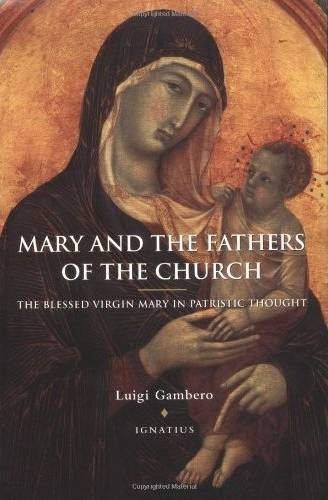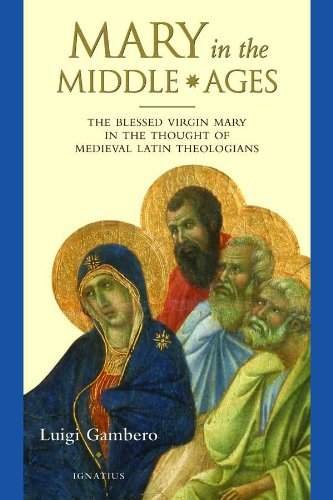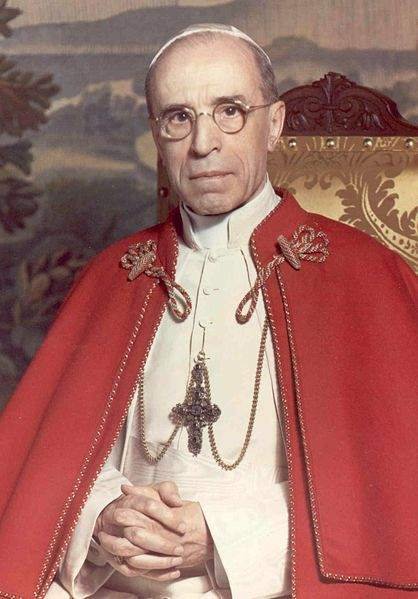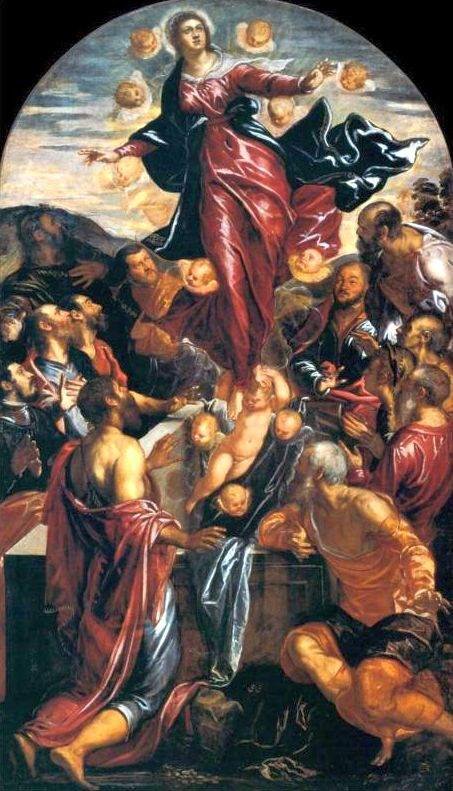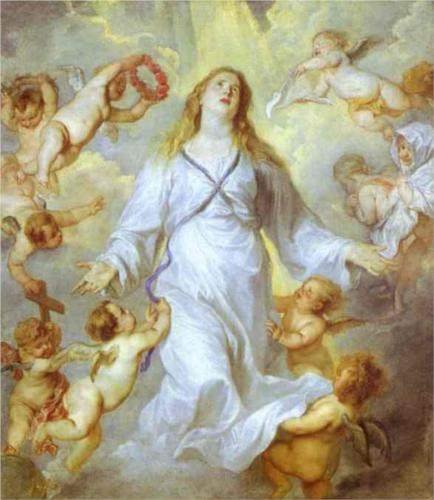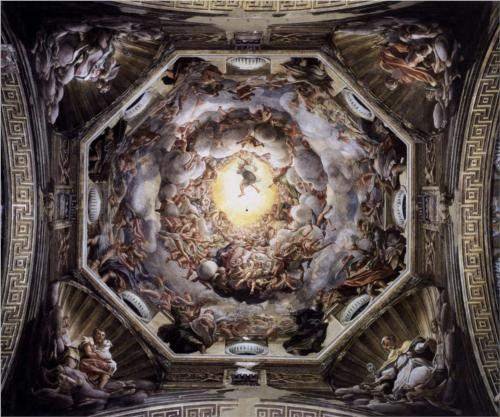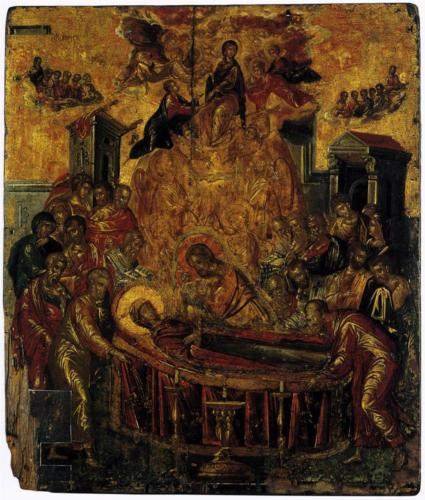Today is the Solemnity of the Assumption of the Blessed Virgin. Early in my journey as a Catholic seeker and convert, I didn’t know quite what to make of this belief and this observance; but as the years go by, and I continue to reflect on it, it is coming to have deeper meaning for me — as it makes deeper meaning of what happened to me today eight years ago.
I didn’t discover until years later that it was on the feast of the Assumption that I had nearly died. When I first discovered, it didn’t mean anything to me; just an odd coincidence of dates. As I began my journey into the Catholic Church, and began to become aware of the Blessed Mother’s intercession for me, I thought, Perhaps someone special was looking out for me that day. But why then, of all days? What did it mean?
He would not let his holy one see corruption
Protestants are bothered by the idea of the Assumption because (and I know, because I felt this way, too) it seems to exalt Mary to a divine level, even to the level of Jesus. I thought that, in Catholic thinking, Mary “ascended” into Heaven, the same as Jesus. But no: the Assumption is a statement that can be applied to every one of us: Mary passed away. She died, as one day every one of us will. And as one day He will appear for every one of us, Jesus came and called to her: as “through Jesus, God will bring with Him those who have fallen asleep” (1 Thessalonians 4:14).
It is written deep within our human nature that one of the most traumatic experiences imaginable is the decay of the body. Since the earliest gasps of human prehistory, man has sought to prepare the bodies of his departed loved ones to rest in death as they would have lived in life, perhaps equipping them as for a journey, clothing them and arraying them with the articles and comforts they would have needed in bodily life. Even today, the idea of seeing our formerly vibrant loved one in a state of decomposition is horrific to the senses: so we chemically treat the corpse to delay the process; we doll it up like a mannequin to give every appearance, to maintain the pretense, that the deceased is still alive, just for a little longer.
For Jesus, no less than for anyone endowed with a human nature, he did not want the beloved flesh of His Mother to see the corruption of the grave. And He alone, having conquered Death, Hell, and the Grave, having won for us Resurrection and Eternal Life, having promised every one of us that “in her flesh, she shall see God” (Job 19:26) — He alone had the power to secure for His Blessed Mother the firstfruits of His Redemption of the human body.
The body is worth saving
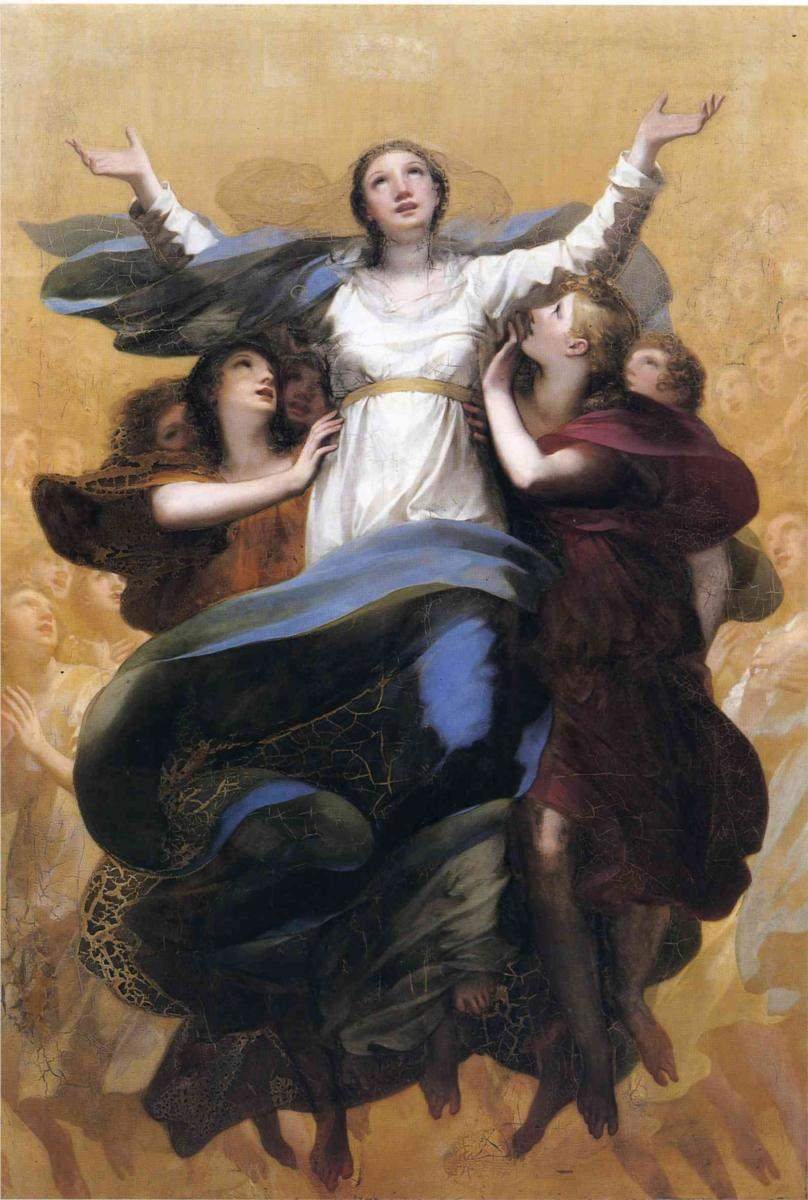
Assumption of the Virgin, by Pierre-Paul Prud’hon (1758-1823) (WikiPaintings)
There is a tendency in Christianity, especially in Protestantism, to reject our human flesh as thoroughly depraved or corrupted, the things of this world as fallen, and — if we’re not careful — to fall into a kind of dualism, resigning the earthly body and bodily things to the dominion of the Devil, against, in contrast, the spirit and spiritual things that are of God. A sometimes lopsided emphasis on the theology of St. Paul, with his frequent juxtaposition of the desires of the spirit with the carnal desires of the flesh doesn’t really help this (e.g. Galatians 5:18–26). I once fell into this trap, too. But even for Paul, the flesh (σάρξ) is not equated with the body. As St. John Chrysostom comments, “By the flesh …, he does not mean the body, or the essence of the body, but that life which is fleshly and worldly, and uses self-indulgence and extravagance to the full.” (Homily XIII on Romans, 8:8).
But the truth is, body and soul, we are created in the image of God. We are whole beings composed of bodies and spirits, not merely spirits wearing corruptible “skins” of flesh. Since the earliest times, the Church of Christ has condemned such dualistic beliefs that matter or the human body were evil, hallmarks of such heresies as Gnosticism, Manichaeism, and Catharism. The idea that flesh is inherently evil is contrary to Christian truth: Jesus came in human flesh to sanctify it, to save us and redeem us from the death of the body wrought by Adam’s sin. Our bodies are worth saving. Jesus was crucified, died, and was resurrected, not as a disembodied spirit, but in a glorified, perfected body, one that lived and breathed and ate: and the same is promised for every one of us. And the Assumption of Mary is the assurance of this; the earnest of the reward that awaits us all. If human flesh were sinful and hopelessly irredeemable, then He would abandon our bodies to the corruption of the grave, but instead He will raise us all to a new life in the body.
Living by the Spirit
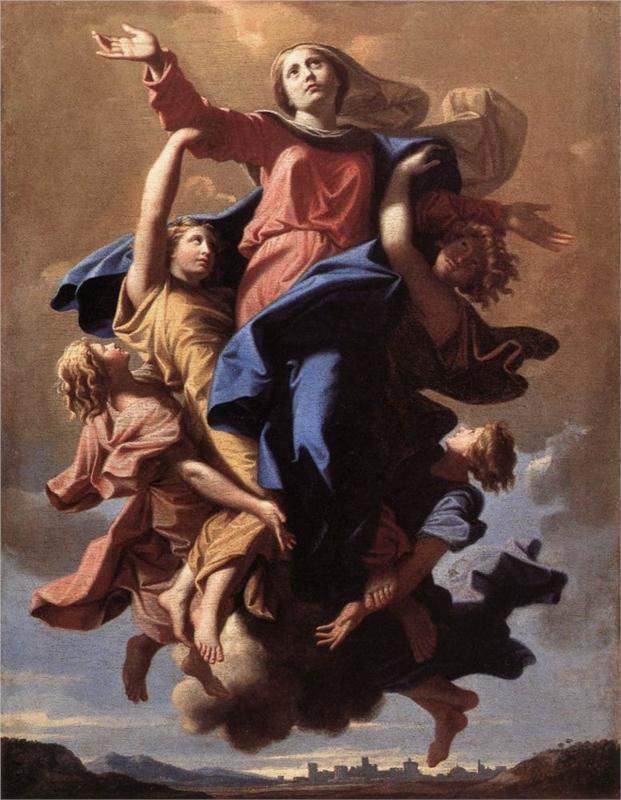
The Assumption of the Virgin (1650), by Nicolas Poussin (WikiPaintings).
This bears significance for the present life, too: if our bodies, our flesh, were evil, then the sins of the flesh would be excusable. We would simply write off sin and say, “It’s not me that sins; it’s just my sinful flesh, and someday I will shed that.” Paul writes something that does sound vaguely similar: “It is no longer I that do it, but sin which dwells within me. For I know that nothing good dwells within me, that is, in my flesh” (Romans 7:17-18). But does he leave it at this? No! “Wretched man that I am! Who will deliver me from this body of death? Thanks be to God through Jesus Christ our Lord!” (Romans 7:24-25). For
“there is therefore now no condemnation for those who are in Christ Jesus; for the law of the Spirit of life in Christ Jesus has set me free from the law of sin and death. For God has done what the law, weakened by the flesh, could not do: sending his own Son in the likeness of sinful flesh and for sin, he condemned sin in the flesh, in order that the just requirement of the law might be fulfilled in us, who walk not according to the flesh but according to the Spirit.” (Romans 8:1–4)
So often these verses are read in such a way as to suppose that “there is now no condemnation” for sins committed by those who are in Christ Jesus; as if even though we continue to sin, that sin will not be condemned. But that is not what Paul says here at all. Jesus came to condemn sin in the flesh — not that we could go on sinning (cf. Romans 6:1-10) or be exempt from keeping God’s commandments (cf. Romans 3:31; Matthew 19:17; John 15:10; 1 Corinthians 7:19; 1 John 3:22,24; Revelation 14:12), but that we might overcome the flesh, that we can, that we have the power and the grace to keep His commandments — “that the just requirement of the law might be fulfilled in us” — not in the law-keeping of Christ, which is imputed to us, but in us — “who walk not according to the flesh but according to the Spirit.” This is the way Mary lived her life, and the way every one of us who are in Christ can live our lives. Blessed be God!
And this is the meaning of the Assumption to me: the message Jesus sent especially for me by marking so significant an epoch in my life on this day, by very literally saving my flesh from the corruption of the grave before my time. At a time when I was lost in sin, when I had completely resigned myself to sin’s flames, excusing it as my sinful human nature which could not be overcome, he stopped me in my path and showed me this: that my body was worth saving, in more than one way; that I could, by His grace, rise above my sinful flesh; that I could be freed from those shackles and set free to live by His Spirit. Glory to God in the highest!


